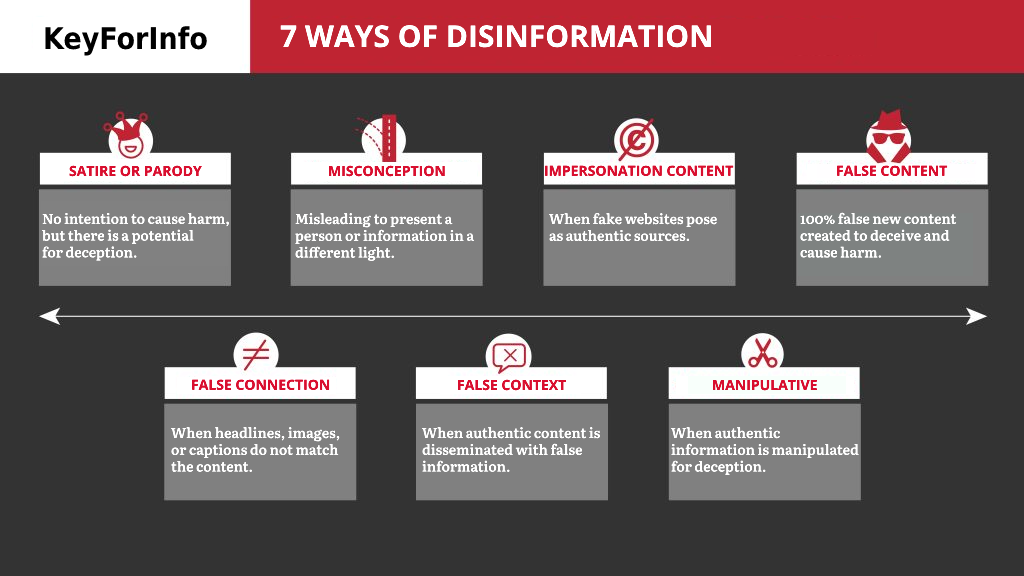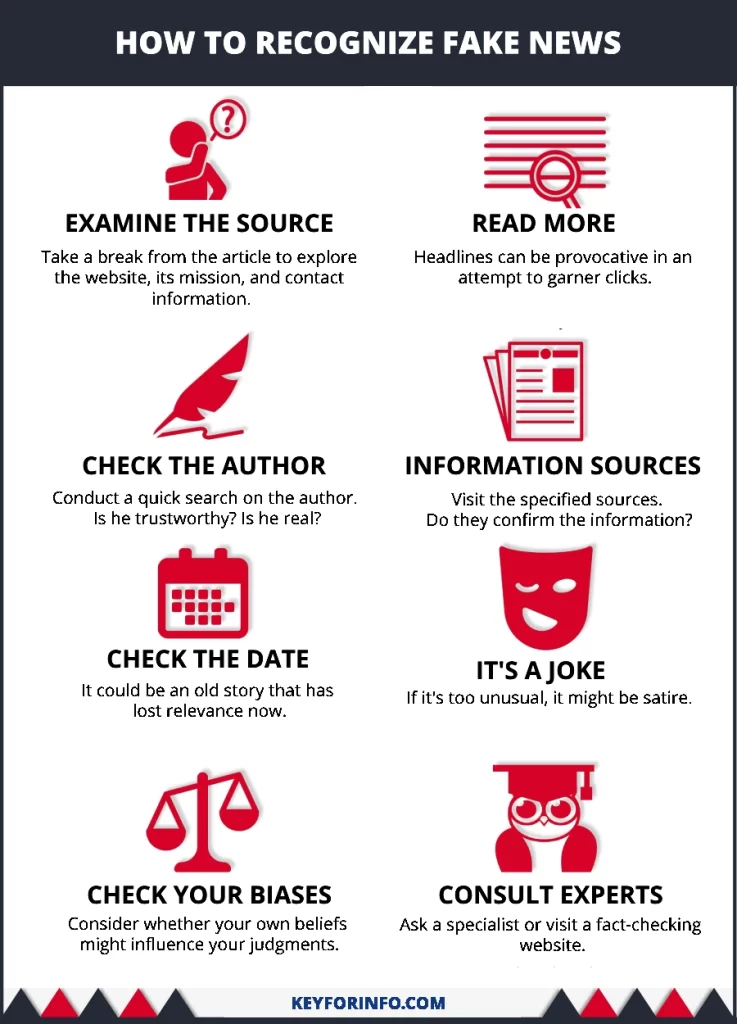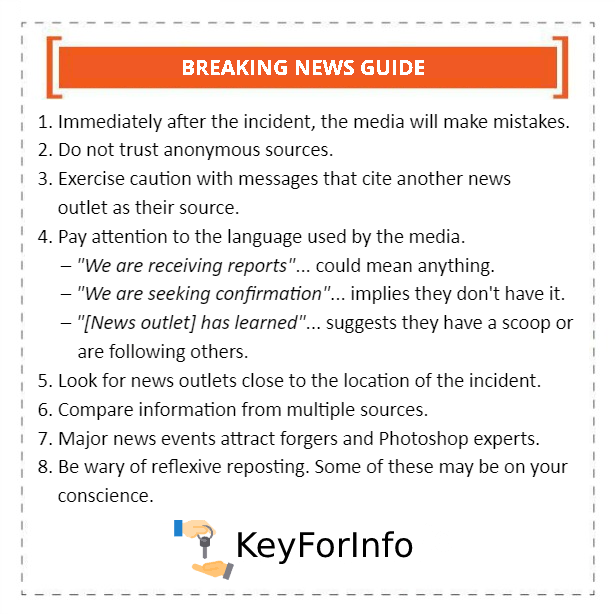How to Recognize Fake News

The issue of “fake news” has been a persistent problem throughout the history of humanity. Those in power, sales managers, and the media—no one hesitates to manipulate people’s trust for their own gain.
But is it solely the fault of those who publish fake news? One must not forget that responsibility also lies with the readers who consume information. After all, demand creates supply.
If you don’t want to fall for fake information once again, let’s explore ways to identify such news.
What are fake news?
How do you define a term that means different things to different people?
“In essence, ‘fake news’ refers to news stories that are false: the events are fabricated, with no verifiable facts, sources, or quotes. Sometimes, these stories serve as propaganda, intentionally created to mislead readers, or they may be ‘clickbait,’ written for economic gain (the author profits from the number of clicks on the story).
However, it’s crucial to acknowledge that ‘fake news’ is a complex and multifaceted problem that goes beyond the narrow definition provided above.
The term itself has become politicized and is widely used to discredit any opposing point of view. Some people use it to cast doubt on their opponents, contentious issues, or trust in certain media organizations.
Moreover, technological advancements, such as the emergence of social networks, enable fake news to spread quickly and easily as people actively share information online. We increasingly rely on internet information to understand what is happening in our world.
7 Types of disinformation
The world of “fake news” extends far beyond just false stories. Some narratives may contain grains of truth but omit crucial details or provide no verifiable facts and sources.
There are stories with essential verifiable facts, yet they are written in a way that incites, distorts reality, or presents only one point of view. “Fake news” exists within a broader ecosystem of disinformation.
Disinformation can be identified in two ways:
- Disinformation is false or inaccurate information spread accidentally or unintentionally.
- Disinformation is false information created and spread with the intent to influence public opinion or conceal the truth.
As seen, disinformation varies in its intent. It is important to note that anyone lacking sufficient knowledge on a specific topic should refrain from claiming to spread accurate information. We are responsible for what we say.
I have developed a useful visual representation below to prompt reflection on the disinformation ecosystem.

- Satire or Parody: No intent to harm, but the potential for deception.
- Misleading: Misleading to present a person or information in a different light.
- Impersonation: Fake websites posing as authentic sources.
- False Content: 100% false new content created for deception and harm.
- False Connection: When headlines, images, or captions do not match the content.
- False Context: Spreading authentic content with false information.
- Manipulative Content: When genuine information is manipulated for deception.
How to recognize fake news
Let’s explore 8 simple steps for recognizing fake news.

Examine the source
Before accepting information at face value, examine the website from which it originates. Familiarize yourself with the stated mission of the source and its contact information. Also, verify the authenticity of photos through reverse image searches to ensure they haven’t been manipulated.
Read beyond the headlines
Be vigilant towards sensational headlines, statements written in uppercase, and attention-grabbing images used to garner more clicks. Don’t limit yourself to just reading headlines; thoroughly study the entire article and, if necessary, conduct additional investigation.
Check the author
Perform a quick search on the author’s name to determine whether they can be trusted (or if they are a real person). Look into their biography and qualifications, assessing how they relate to the topic they are writing about.
Verify supporting sources
Ensure that the links provided in the article are reliable and verified sources.
Check the date
Pay attention to the publication date of the news; it might be outdated information that has lost relevance over time.
Consider satire
If the image looks implausible or the news sounds overly outrageous, it could be satire. Check the information on the website and the authorship to confirm.
Examine your biases
Be cautious and honest with yourself; could your own beliefs influence your judgments regarding the presented information?
Consult experts
If you have doubts about any information, consult a specialist or visit fact-checking websites to obtain reliable information.
Following these steps will help you assess information more critically and recognize fake news.
Tips for interpreting important (urgent) news
Whatever you hear in the first couple of hours after a major news event, it’s advisable to approach it with a degree of skepticism.

1. Immediately after the incident, news agencies may make mistakes.
2. Avoid trusting anonymous sources.
3. Exercise caution with reports citing another news outlet as their source.
4. Pay attention to the language used by the media.
- “We are receiving reports”… could mean anything.
- “We are seeking confirmation”… implies they don’t have it.
- “[News outlet] has learned”… suggests they have a scoop or are following others.
5. Seek news outlets close to the location of the incident.
6. Compare information from multiple sources.
7. Major news can attract forgers and Photoshop experts.
8. Be cautious with automatic reposting. Some of these posts may be on your conscience.
Strategies to combat fake news
1. Stay informed: Many popular sources, especially online news platforms and social media, vie for your attention using sensational statements and even manipulate viewers.
2. Think critically: Critically evaluate the news you encounter. If information sounds too good (or too bad) to be true, it probably is fake news. Most fake news plays on our tendencies to seek confirmation of our beliefs, whether positive or negative.
3. Fact-check from reliable sources: When faced with claims in the news, especially if they cause concern, take the time to fact-check using authoritative sources. While even reputable sources can sometimes make mistakes, they rigorously fact-check to ensure the accuracy of their articles.
4. Stop the spread of fake news: You can contribute to stopping the spread of fake news by not sharing it further on social media, via email, or in conversations.
